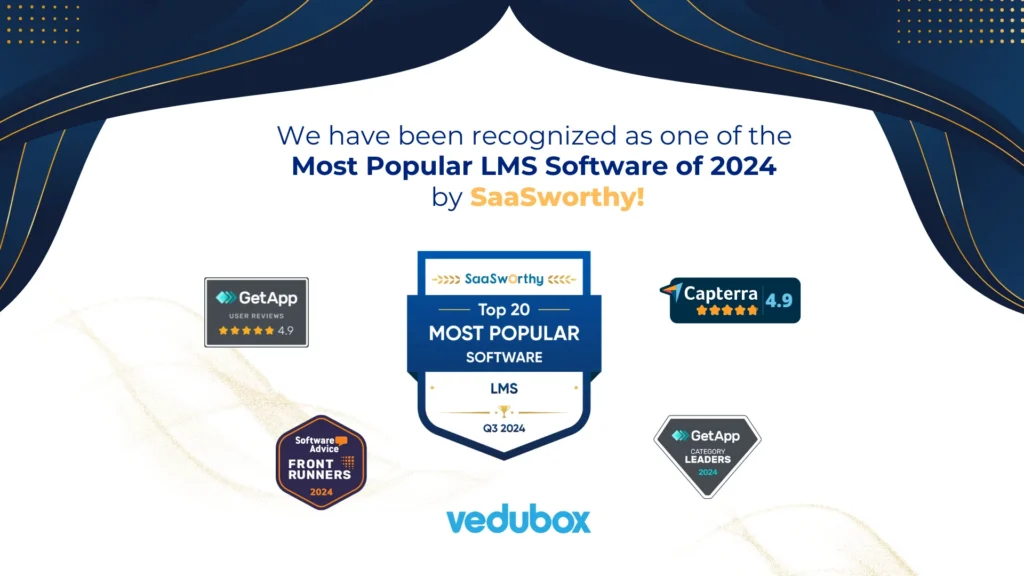Watching videos is an integral part of daily life for many of us. In our free time, when we are eating, when we need help with something, our go-to places are various platforms where we can watch videos.
Given the assumption that training is often boring, can an approach that uses videos as the basis of education be successful to break down that assumption? In this article, we will talk about video-based learning, which has been frequently brought up recently, and what kind of benefits it can provide. Of course, we will also touch on the disadvantages of this approach.
What is Video-Based Learning?
Video-based learning, as the name suggests, is the use of videos in education to acquire/teach new knowledge and skills. In fact, this approach, which started to be used in certain ways since the late 2000s with the spread of the internet, has grown with a snowball effect thanks to major platforms such as Coursera and Skillshare, especially Udemy.
Video-based learning, which is one of the most frequently used and generally accepted e-learning approaches today, is being adopted by more and more companies. In fact, a study published in the British Journal of Educational Technology reveals that 95% of companies use different types of videos to train their employees. So what is the reason why these companies use videos so much in education? Let’s take a look at the benefits of a video-based learning approach.
What Are the Benefits of Video-Based Learning?
Video-based learning brings many benefits such as flexibility, time saving, continuous learning and cost savings.
-
Flexibility and Time Saving
The biggest benefit of video-based learning for employees is flexibility and time saving. Employees, who have the flexibility to learn new information by watching training videos wherever and on any device tend to see training as an activity that they can improve themselves instead of seeing it as a necessity. This naturally increases the overall participation in education and the success rate of the training. Most importantly, employees who do not see education as a necessity and are willing to learn add value to the future of the company.
- Cost Saving
The most tangible impact of the video-based learning approach on companies is undoubtedly cost savings. Thanks to videos, you can save on expenses such as teaching in a physical space and paying instructors for this. IBM, for example, has a YouTube channel called IBM Support and Training that focuses solely on employee training. Just 2 years after IBM adopted its video-based learning approach, it is known to have saved $579 million and reduced the cost of training per employee from $320 to $17. Speaking of IBM’s YouTube channel, we’ll talk a little bit about it in the next item.
- Continuous and Just In Time Learning
Let’s revisit IBM’s employee training-focused channel. The channel has training and guidance videos from different categories and departments. So why are we talking about this? Of course, because of their approach to continuous and just-in-time learning.
Since the training content produced as a video is always accessible, an employee can find answers to their questions by watching these training or guide videos when they need it. In addition, various videos for different departments can be accessed at the exact moment when they are needed and training support can be provided. We call this approach just-in-time learning.
In addition, due to the cost-saving effect, a part of this resource can be used to create short training videos that will continuously feed employees on various subjects and ensure the continuity of employee training and development. This approach is called continuous learning.
Such short videos can also be shown as an example of micro learning, which has been a popular approach in recent years. You should definitely try to create a training content library by dividing your videos into different categories in your LMS system.
Disadvantages of Video-Based Learning
While it’s an impressive and practical approach, like everything else, the video-based learning approach has some shortcomings.
- Passivity
Perhaps the biggest con of this approach is the passivity it brings. This means that employees do not have classmates or instructors to interact with during training. For this reason, when supporting video-based learning, you often have to compromise on social learning. In our next sub-topic, Modern touches to video-based learning, we’ll make some suggestions that can reduce the impact of passivity.
- Limitation
Another con of video-based learning is its limitation. In other words, what employees learn is limited to the information given in the videos. For this reason, when employees cannot find the answer they are looking for in the guide video or when there are points they do not understand, they have no other choice but to watch the video again or ask their colleagues. This limitation can be a problem, especially for those working in more technical fields.
Modern Touches to Video-Based Learning
After talking about what video-based learning is, its benefits and disadvantages, let’s talk about how you can integrate the trends of the education world into this approach.
- Interactive Videos
Interactive videos are videos where users are offered the opportunity to choose from different options and the scenario changes according to the user’s choice. When people are given choice, they tend to focus more on what they’re interested in. That’s why, you should integrate interactive videos into your video-based training model, where you can give employees the opportunity to choose and shape scenarios.
Interactive videos will increase the retention of content and overall participation in training, while slightly reducing the passivity disadvantage that video-based learning brings.
- Multidimensionality with the Metaverse
While contradicting with the cost advantage of video-based learning, bringing interactive videos to the Metaverse with VR glasses will be an exciting experience for employees. Employees always prefer to be in companies that follow and implement technological developments. You can also add a variety of gamification elements to videos besides interactivity, taking the Metaverse experience to the next level.
Final Words
video-based learning is a simple, cost-effective and, most importantly, efficient way to train your employees in almost any specialty or subject. For example, you can create compelling videos to provide product information, onboarding, teach how to work with new software, and train employees in basic social skills. However, as we mentioned above, using videos alone can bring with it some disadvantages. For this reason, instead of using videos alone, you can combine them with different approaches and get very different outputs in a positive sense.




















